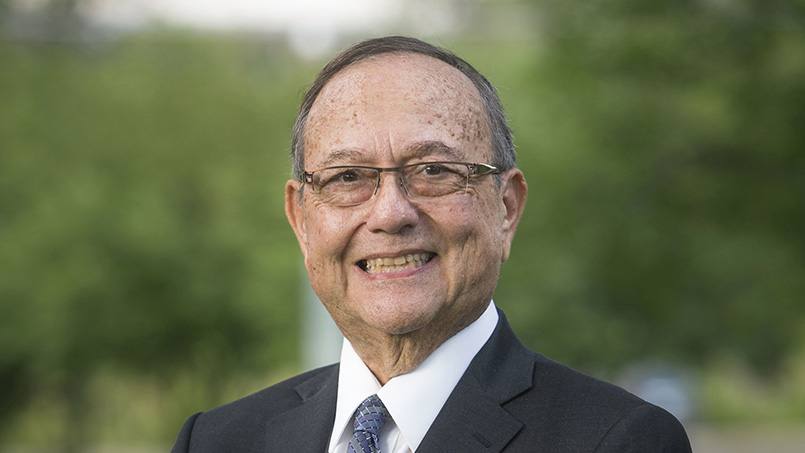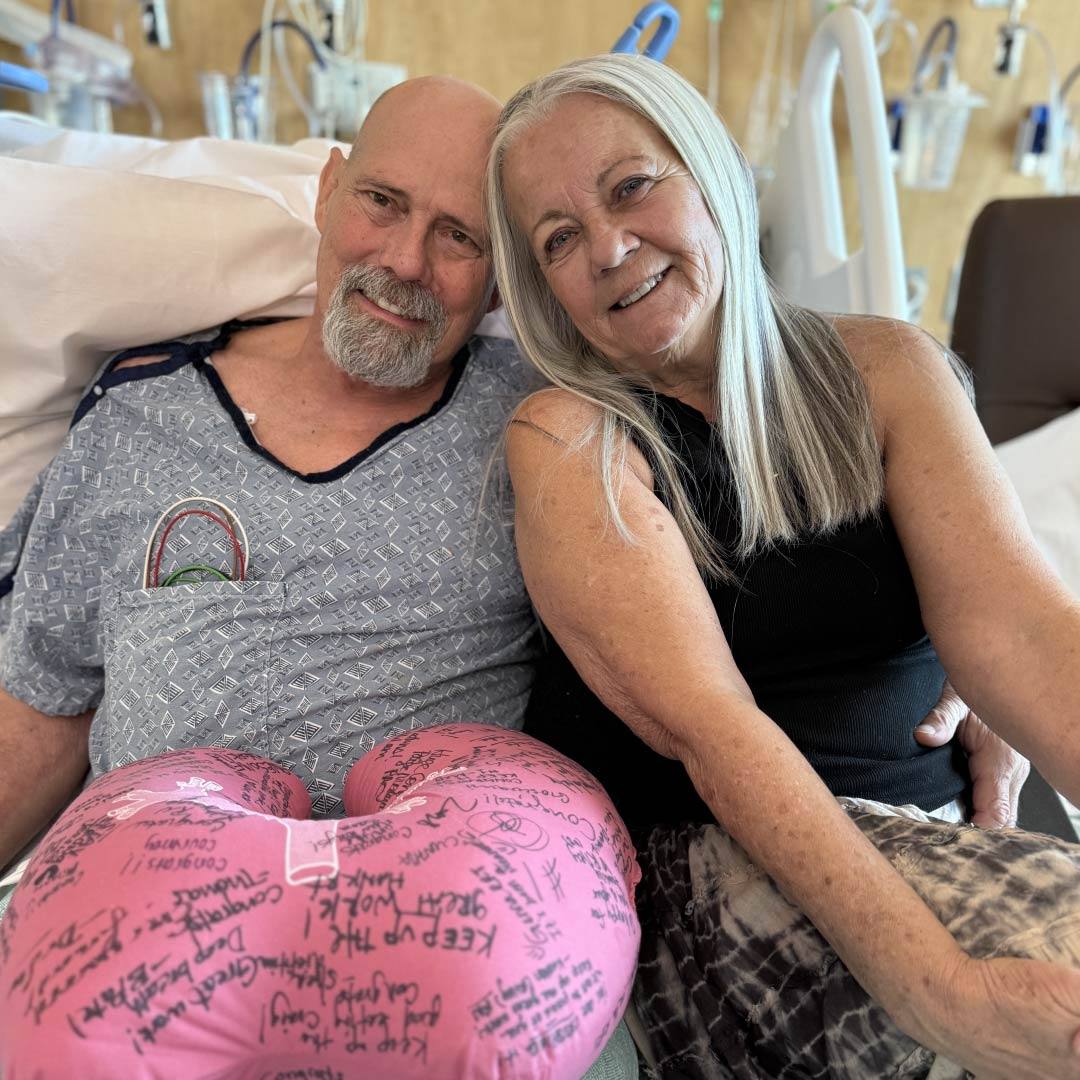Years of health challenges that led to two kidney transplants motivated Ed Pompeian to establish the Gift of Life Transplant House, where people navigating their own transplants receive lodging, along with plenty of support and encouragement.
Since he was 12 years old, Ed Pompeian's life has been shaped by the state of his kidney. You won't hear him complain, though.
Through a lifetime of health challenges, including two kidney transplants, Ed fell in love and raised a family. He built a successful business. And along the way, he improved the lives of thousands of other transplant patients and their families.
It all started with a sick boy and some unanswered questions.
Mystery illness
Ed was living in Michigan when he began having nagging health problems. Doctors suspected it was lupus, but that wasn't right. Neither was anything else they thought they had diagnosed. It was a mystery, and nobody seemed to have a solution.
While the doctors pondered, Ed's health continued to deteriorate. Doctors told Ed's parents their son likely wouldn't see his 16th birthday. They were wrong.
Ed has survived and thrived, but it wasn't always easy. Health problems, particularly in those early days, limited what Ed was able to do. He spent a lot of time indoors, and was rarely able to hang out with friends.
"I didn't have the normal teenage years. That's for sure," Ed says. "I finished high school on time and graduated with honors, but I was at home most of those years."
Ed started dialysis when he was 17. In the mid-1960s, at the suggestion of a family the Pompeians met during one of their frequent hospital visits, they looked to Mayo Clinic for answers. His Mayo Clinic doctors got Ed back on his feet. They put him on a low-sodium, low-protein diet. But they also told his parents that no matter what they did, their son's kidneys were eventually going to fail.
A new way forward
Kidney transplants were a new procedure at the time. Ed's care team at Mayo Clinic suggested waiting until more of the procedures had been successfully completed before scheduling his transplant. Ed's mother had been cleared to become his donor, so with a living donor already identified who was a match, the family decided to hold off on the transplant until his physicians felt the time was right.
"I was fortunate because my family was arguing about who would donate," Ed says.
Finally, in 1972, it was time. The family moved to Rochester, Minnesota, that year, and Ed has been there ever since. Today, Ed is one of Mayo Clinic's oldest and longest-surviving kidney transplant patients.
"My transplant journey has been incredible for me — from the people we've met to the personnel at Mayo. I wouldn't want my life to be any different than it is." — Ed Pompeian
Ed's mother donated her kidney for his first transplant. But things didn't go exactly to plan. In the early days of kidney transplants, the procedure involved removing the spleen and diseased kidney in an initial surgery, then completing the transplant 30 days later. Due to complications, Ed's experience took longer. He was in the hospital from September through December 1972, eventually receiving his transplant on April 26, 1973.
For 25 years after that, Ed's medical condition was mostly stable. His new kidney functioned well, and there were no changes in his blood test results. The theory at the time was that some transplant patients could eventually stop taking anti-rejection medication. But when Ed began reducing his anti-rejection medications, he started having problems.
The kidney he got from his mother failed after 31 years, and Ed found himself in need of another transplant. On Dec. 28, 2004, Ed's 20-year-old son, Aaron, became his second donor.
Finding a career and a calling
Ed tried going to college after his first transplant, but health problems made it difficult for him to consistently attend class. He eventually dropped out. After a year of career uncertainty, Ed saw a newspaper ad from a real estate firm looking for new agents. He decided to give it a try. He got his real estate license in 1975, started his own office three years later, and spent the next 40 years building a successful real estate career.
Along the way, Ed began buying properties. He bought a hotel, some houses and a few apartment buildings. They were meant as investments, but for Ed and thousands of others, those investments soon became something much more vital.
After his first transplant, Ed made a habit of visiting other transplant patients at Rochester Methodist Hospital. His goal was to support patients through the transplant process because there wasn't a formal transplant program in place at the time.
During one of his visits, he met a nurse named Jayne, who would eventually become his wife. Then Ed once again defied the odds. Although he was told he would most likely not be able to have children due to his long-term use of anti-rejection medications, in time, Ed and his wife had three boys and one girl.
Not only did his visits to transplant patients lead him to the love of his life, but Ed began to notice the challenges transplant families faced. Patients have to be in or near the hospital for extended periods both before and after transplant surgery. Renting a hotel room quickly becomes expensive and inconvenient. Ed believed there had to be a better way. He decided to create a place where patients and families could stay during their transplant journey, where they could be comfortable and not break the bank.
"It makes me happy and proud. My wife and I will drive by those houses and say, 'Can you really believe that we did this?'" — Ed Pompeian
Ed began by renting a unit in one of his apartment buildings to transplant families. However, it quickly became clear that as much as they needed a place to stay, the families also needed a support network and contact with other people who were facing the same challenges. The isolation of an apartment building would not work.
In 1984, Ed found exactly what he was looking for in a neighborhood near Mayo Clinic's Rochester campus.
"I walked in and said to myself, 'This is what a transplant house should be," he recalls. "It had eight bedrooms, three bathrooms, a huge kitchen and Craftsman-style architecture."
The house wasn't in Ed's budget, but the seller liked Ed's vision of turning her home into a transplant house. She agreed to accept a $15,000 down payment and a $100,000 purchase price. With a deal in place, Ed made the rounds in Rochester to collect donations for the down payment. Later that year, he established the Gift of Life Transplant House to support transplant patients and their families.
A family tradition of support
As Mayo Clinic's transplant programs grew, so did the demand for the Gift of Life Transplant House services. The organization opened a second house in 2009. Between the two locations, the houses offer 84 rooms for people going through transplants of all kinds. Each room has two beds, one for the transplant patient and one for a caregiver. Residents cook in common kitchens and spend time together in large common areas. If the houses are full, the Gift of Life Transplant House staff helps patients find discounted rooms at nearby hotels.
The Gift of Life Transplant House has helped thousands of families over the years. Ed, who still lives in Rochester but spends the winter months in Florida, remains involved with the organization, along with his daughter and one of his sons. Ed's wife has also been a willing volunteer, from housing transplant patients in their own home to helping serve meals to simply being available to meet patients and families.
"It makes me happy and proud," says Ed, who recently wrote a book, called The Gift of Life, about his experiences. "My wife and I will drive by those houses and say, 'Can you really believe that we did this?'"
Ed has come a long way from the ailing 12-year-old who often couldn't leave his house. He has cleared more hurdles in that time than most people can imagine. But he doesn't regret any of it, and would never wish for anything else. His transplant experience has made him who he is. The path he followed brought him to his wife, gave him his children, and allowed him to help countless other families through their own difficult times.
"I've had so many miracles in my life. It's just incredible," he says. "My transplant journey has been incredible for me — from the people we've met to the personnel at Mayo. I wouldn't want my life to be any different than it is."
HELPFUL LINKS
- Read about kidney transplants.
- Explore the Mayo Clinic Transplant Center.
- Learn more about the Gift of Life Transplant House.
- Connect with others talking about Kidney Transplant on Mayo Clinic Connect.
- Request an appointment.
Related Articles








